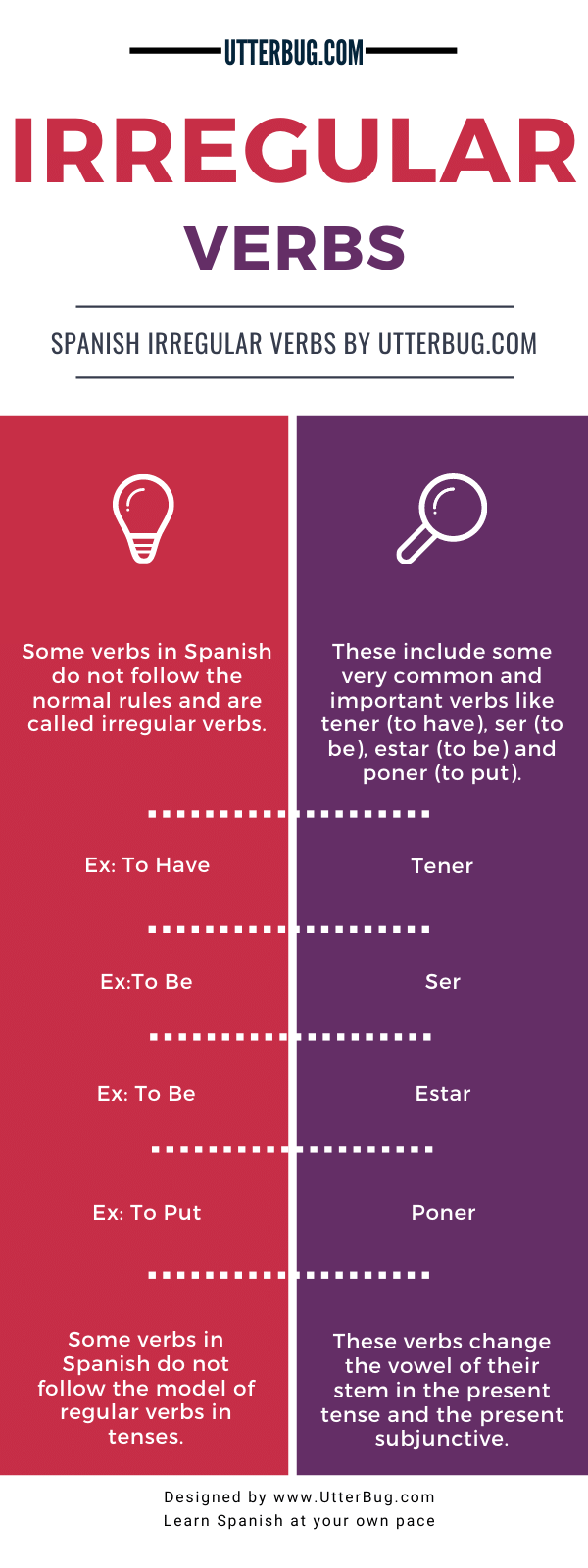
Table of Contents |
|
| 1. Irregular verbs | |
| 2. Forming the present tense of less regular verbs | |
| 3. Examples of Irregular Verbs | |

Some verbs in Spanish do not follow the normal rules and are called irregular verbs. These include some very common and important verbs like tener (to have), ser (to be), estar (to be) and poner (to put). The most common irregular verbs are shown in the verb tables. For more detailed information on all the most important irregular verbs in Spanish, use Collins Easy Learning Spanish Verbs.

Some verbs in Spanish do not follow the model of regular verbs in some tenses. These verbs change the vowel of their stem in the present tense and the present subjunctive. This is not as complicated as it might sound. All it means is that you have to change a single vowel into two vowels in the way shown below.

The o in certain verbs changes to ue:
| Infinitive | Stem | Meaning |
| Encontrar ? | encuentr | To Find |
| Poder ? | Pued | To be able |